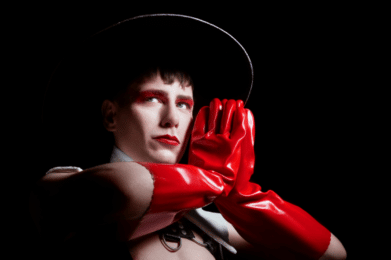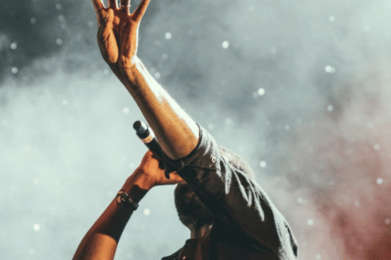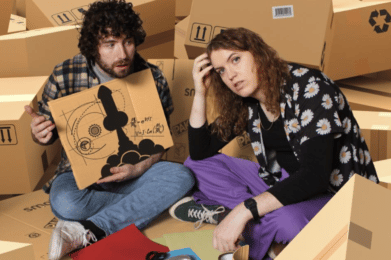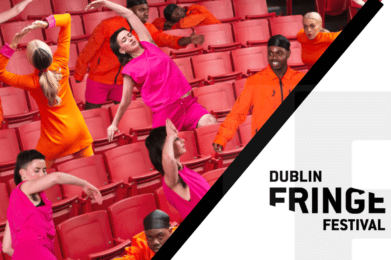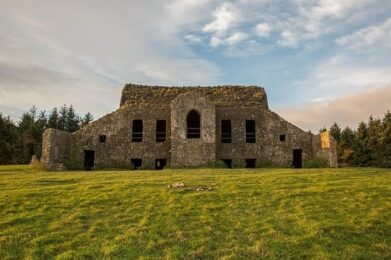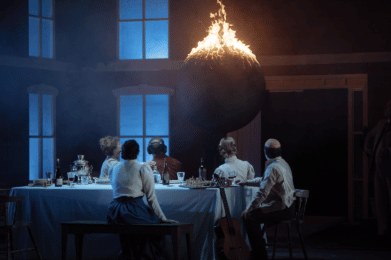Interview with Peter Smyth: “I suppose I feel I’m making something of utter complexity or abstract thoughts we have about what goes on beneath us, underground and all around us.”
Peter Smyth is an Irish artist based in Kildare. Smyth’s work is heavily influenced by ecological thought. He explores the dichotomy of painting and digital art, creating pieces that utilise both mediums. He talks to us about his work, his greatest influences in art and his future projects.
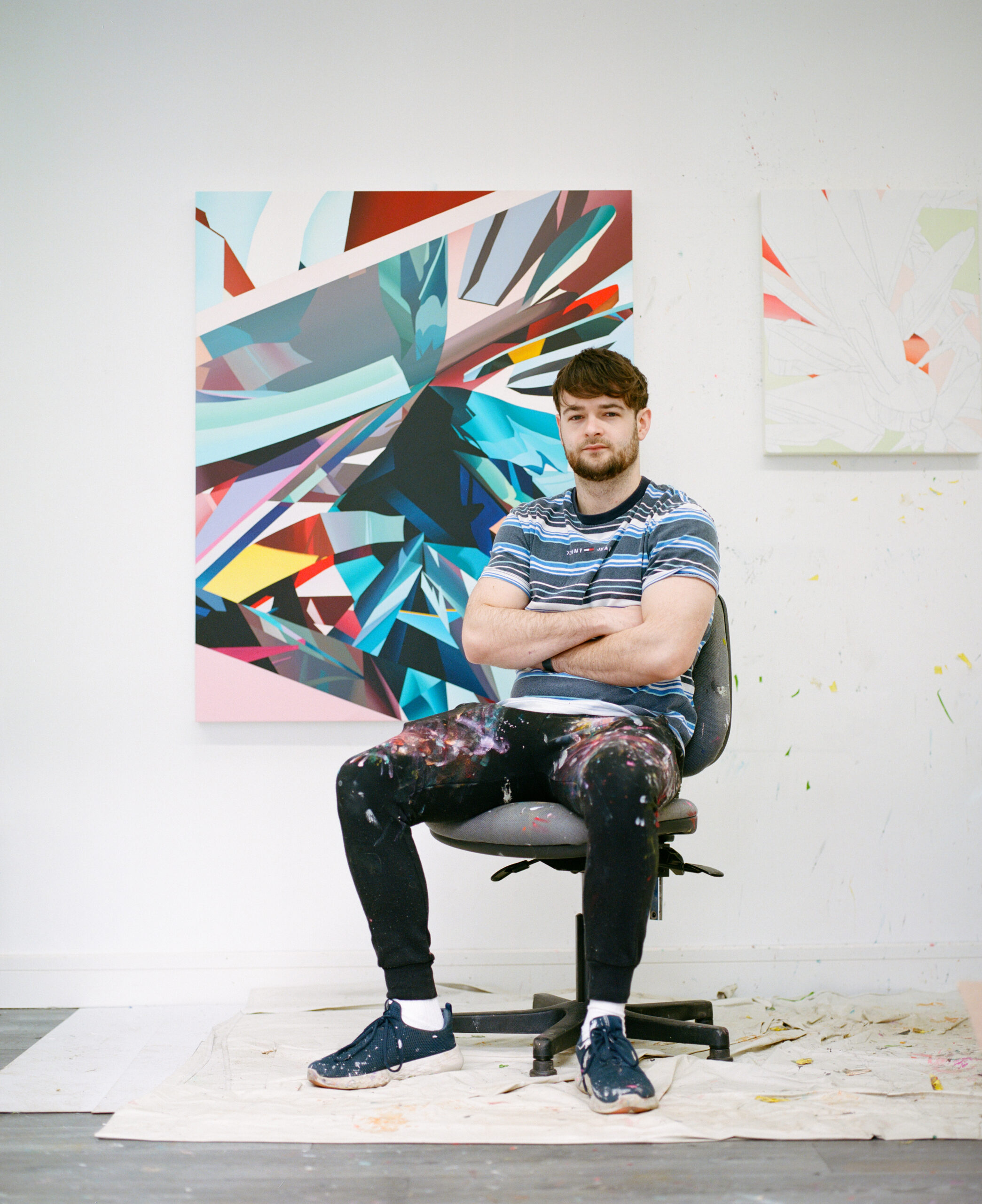
Tell us about yourself!
Hi, my name is Peter Smyth. I’m an artist living and working in North Kildare. I’ve been a self-employed artist for the last 2 years at this point, having built a home studio out the back of my family home back at the beginning of 2021, this is now my full-time haunt.
Can you tell us about your art?
Currently and for the past year and a half, my work has been influenced by ecological thought, the philosophy entangled with it and certain ecosystems within that such as fungal networks and the organisms they interact with. That combined with the overarching dichotomy of the ontology of painting and that of digital art. By that, I mean calling into question by means of implementation, the properties of both and their relations to one another.
My work and my process utilises both mediums in its conception. I view my paintings as a collaborator and competitor to digital art, it almost must be as why else would I paint the canvases if could print to them to the same effect, I say to myself. The weight, the texture, relief, the traces of human experiences achieved in paint, they cannot be replicated by any AI even, or maybe I’ll eat those words.
What about your artistic style?
In terms of the actual aesthetic, stylistic representation of my work. It’s formulated by drawing shapes acquired from deconstructing imagery of plant life, such as petals, leaves, stems to mappings of fungal networks.
I create usually rudimentary looking 3d extrusions of them, sometimes rigid and sharp, sometimes curved, I suppose maybe because I’m thinking of them broken down or zoomed into on a micro level. To then assemble those in a piece of software that renders lighting and different textures/materials is interesting, they’re recognisable shapes, but the colours chosen are arbitrary, like the process of constructing the compositions altogether. I’m left with something I could never have envisioned from the start, the depth achieved then within the painting is something that engages our sense of contextual space, or at least that’s what I hope it achieves. I suppose I feel I’m making something of utter complexity or abstract thoughts we have about what goes on beneath us, underground and all around us.
I noticed you implement digital processes into your art practice. Can you tell me more about this creative process?
The digital process is essential to my work. The paintings never come into existence without it and I recognise that. I can of course choose my inspiration, my point of departure in which the subject is chosen, the shapes are drawn and translated then into 3D models.
The good stuff begins to happen when you change the lighting, the colours, the reflective properties of the objects in the software. You’re taking these shapes and manipulating them to a point where they interact in just the right way, of course that’s subjective to me as I ultimately settle on the picture I will translate to a painting. The brilliance of it is that the most incongruous colours that don’t necessarily have this great colour relationship in theory seem to work together out of nowhere. Suddenly you can crop into this and see a wonderful idea for a painting.
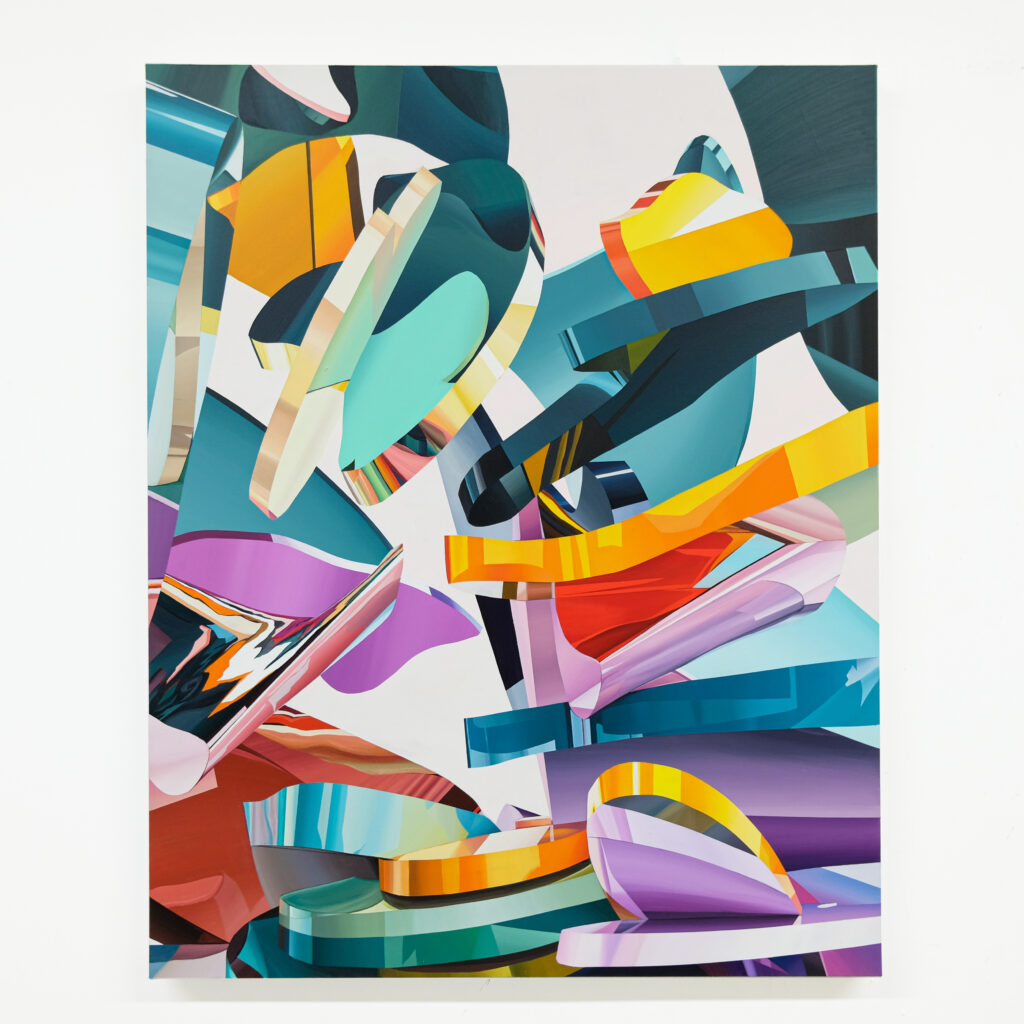
What are your greatest influences as an artist?
The world around us in general, the systems present, the forces at work, the sheer scope of it all. I’m always baffled, like many of us, about the infinitude of things which surround and affect us in so many aspects; the individual leaves on each bush, the tree outside my window, to the quantum level of what passes through our bodies every moment we exist. I feel as though I must express that in some form, like some sort of votive offering to the world. Some do that through nurturing more growth in terms of gardening for instance. I like to think I’m doing a bit of gardening myself with my paintings, my arrangements. I coined a term for my paintings, some are titled as such, calling them ‘Arborisms’ after what you call an arborist or tree surgeon.
As a young, emerging artist, can you tell me what it’s like to work in Ireland?
The artistic community in a Dublin, theres a lot of positive things for such a small country. Maybe it’s the artist friends I’ve made and the other connections that make it all feel very tight knit, or a smaller world to me. Whether that’s necessarily a good thing I’m not sure. Theres certainly a hunger for art in Dublin and that’s great, however I’ll report back in the future on how far Dublin alone may get you as an artist. Whilst you can get great opportunities here, it’s a matter of how many and for whom, due to the scale of the creative industries/ gallery scene here.
Has there been anyone who inspired you to continue your art?
Other than the unwavering support of my parents since I was young, theres one person who’s been a massive proponent in my career so far, that would be the artist Al Maser.
When covid hit I left my retail job on the back end of finishing my postgrad and I had the time to focus on painting. Maser bought two of my early works and invited me into his studio to have a chat. He expressed his belief in me and that gave me more encouragement to go all in. He offered me a solo show in 2021 and it opened in March 2022. It provided me a platform to showcase my work and to be seen by new audiences. To have had my first show in Atelier Now at such a pivotal time, I will be forever grateful. To be told you have what it takes from somebody who has had already such a successful art career and then to be backed by him in that instance was incredible. Not only that being a success for me, it introduced me to other artists who have a similar mentor relationship with Al, whom I have become great friends with.
To see artists like Sean Atmos, who is a fantastic artist and friend, do so well from a similar position but with a different artistic background, it inspires me to keep going. When you see colleagues around you thrive you are reminded in your own practice that you can achieve things with hard work and consistency, and with a good group of artists in your circle or environment.
What is the best piece of advice given to you?
Patience being a virtue, or not to cut corners, or don’t rush anything. Whatever way you like to take that, it remains very important to me, though simple and cliché in essence. My father is a massive perfectionist when it comes to fabricating anything, tackling any project and that has rubbed off on me, though it only took most of my life. There’s an inherent urge at times I feel to push out work to keep up with everything that goes on in our online lives, that’s a massive issue in this ‘content’ generation, it’s a fine line to balance when you’re trying to make progress and be seen.
What is something you’ve always wanted to do in your art career?
Currently, I have my eyes on a show internationally. Whether that’s a group show or a solo show I’ll take that one step at a time. There might be something on the way but its to early to know for sure just yet.
I would like to do something in relation art and science being exhibited side by side, think mycology expert, some data visualisation, and paintings responding to that in the same space, but how that might be made manifest yet I’m not sure.
Any future projects we should keep an eye out for?
I have a piece being auctioned off for Scoop Outside the Box, to support the Scoop Foundation Charity in the Royal Hibernian Academy (RHA Gallery) on the 28th of March 2023. Beyond that I cant say too much as there are two things which aren’t set in stone just yet but keep your eyes peeled for something in Dublin in April/ May and something bigger towards the end of the year!
To contact or learn more about Peter Smyth’s work, follow him on social media and check his website:
website: Peter Smyth
Instagram: @_petersmyth_
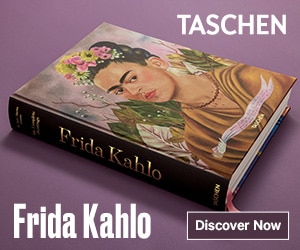
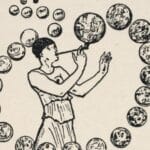
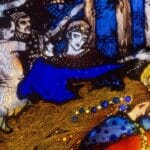
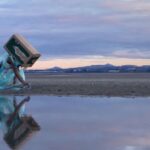

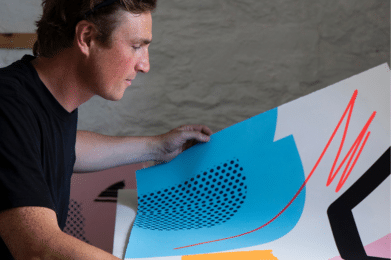
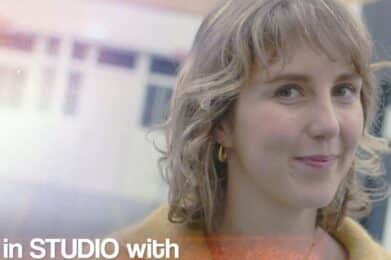
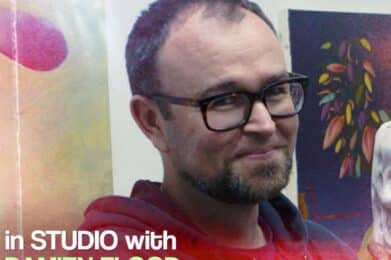

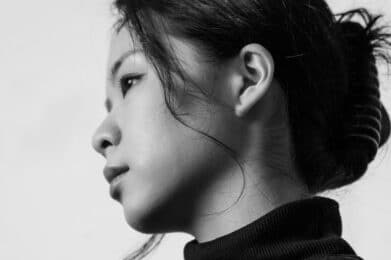
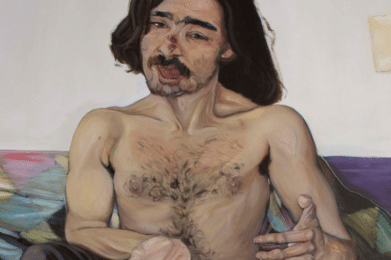
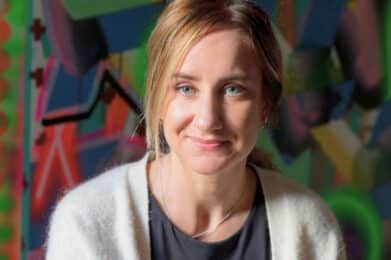
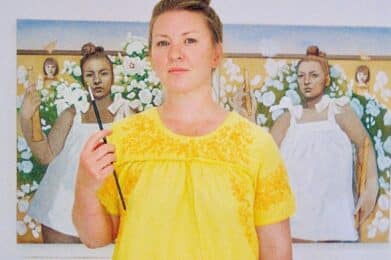
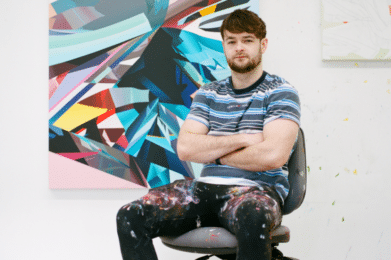

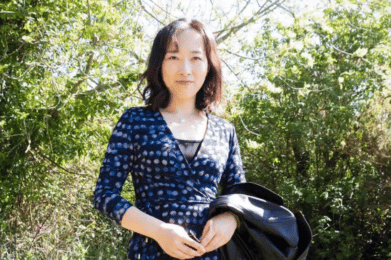
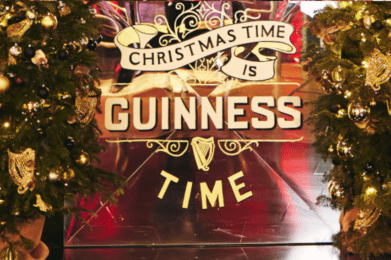


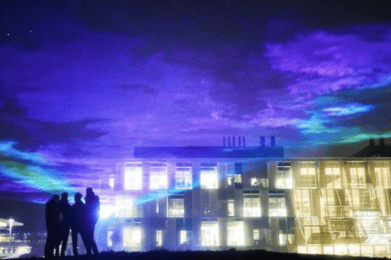

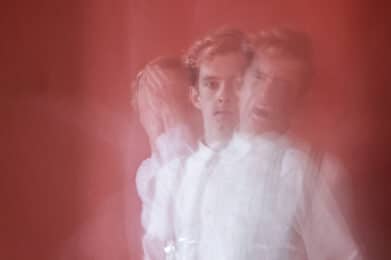
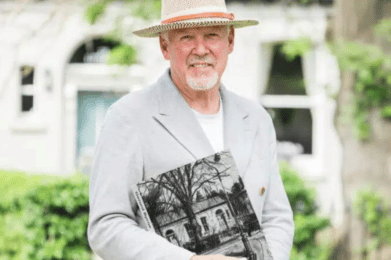

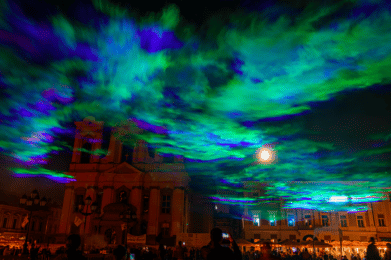

![Conversation with Maser: “I found graffiti definitely was the vehicle for me to be able to really explore what I wanted to do, meet similar peers that had the same sort of mindset as me […]”](https://dublinartlife.com/wp-content/uploads/2022/09/DAL-Interview-4-391x260.png)
